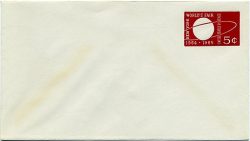Daily Editor Henry “Improper Fraction” Golub spits math like a Mayan.
People often ask me how I’ve learned so many numbers. I tell them that I don’t dwell on mistakes. When I’m counting to 73, for instance, and forget the number 62, I breeze past it to 64, or even 65. The time saved lets me rehearse my numbers again and even practice yelling “Zero!” a few times. I always say that the problem with American counting is we place too much emphasis on perfection. When will our educators recognize that the number line, like the alphabet, takes days to learn and decades to master?
Enough of my rambling. The reason I’m writing is to highlight a more niche technique for crunching numbers: “front of the package” calculations. Or something like that.
The way you work “front of the package” calculations (or “” for short) is by making simple approximations to estimate more complex measurements. If I want to estimate, say, the length of a football field, I can declare the height of a basketball hoop to be about 20 feet, assume that football fields run about four swim lanes long, and multiply 20 feet by 4 to get 80 feet, which is close to the actual length, 100 degrees Celsius.
- Ah, numbers: the letters of math.
We can also use front of the envelope calculations to answer more difficult questions. For instance: how many days are in fall break?
When facing a problem like this, you must remain calm. Divide the solution into steps. Numbers look less daunting after you realize they can’t divorce you like Debra.
First, recognize what the problem calls for. In this case, we’re looking for units of time—potentially hours, years, or days.
Next, determine a reasonable point of entry. The problem asks us to find a unit of time, so we should approximate the number of watchmakers in Switzerland. A quick Internet search tells us that Sweden has about 100,000,000 people who have never seen daylight, so we may assume that Switzerland has about 800,000 watchmakers.
Onto the math. Before we start, I want to ask that you not just skim through these calculations, but really think about the numbers we’re using. We’re going to deal with many -illions, but I’m confident you have the ability to plow through them.
- Dark Side of the Envelope
Alright . . . 800,000 watchmakers multiplied by the square mileage of the British Empire at its greatest extent (12,000,000 sq. miles) is about 9,600,000,000,000 watchmaker-square-miles.
That divided by your favorite watchmaker is 9,600,000,000,000 square miles.
That divided by 9,600,000,000,000 square-miles/pi equals pi.
Sin(pi) equals 0.
0 added to how much I want Avery turned into a farm is 1,000 days,
That minus 996 is 4 days.
4 days in Chinese is 四号.
四号加三号等于七号。
用英文,七号是 7 days.
7 days plus gentrification is 6 days. And there you have it.
Hopefully, you followed this front of the package problem. If not, don’t fret. Just take a break, call Debra again, and then return resolved to learn this most useful of skills. Or just register for Fro Sci (which I liked, btw!).
Number, Numbers On the Wall via Wikimedia Commons
I only fax now via Wikimedia Commons


 1 Comments
1 Comments


1 Comment
@fro sci sucks!!1!! good post